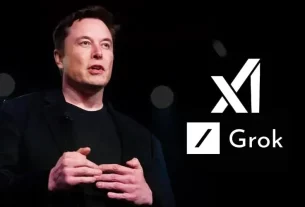2024 promises to be a pivotal year for social media advertising, with fundamental shifts brewing on established platforms like Instagram and Facebook. But amidst the noise, LinkedIn has made a quiet yet potentially game-changing move: sponsored articles. This seemingly simple addition could be the company’s masterstroke. Here’s why:
- Google Reach, LinkedIn Relevance: Unlike organic LinkedIn posts, sponsored articles will appear in Google search results. This is a critical differentiator. Imagine your carefully crafted thought leadership piece, brimming with insights and expertise, reaching not just your LinkedIn network but also potential clients, investors, and collaborators through Google searches. That’s the power of this move. It’s like promoting your expertise on Google but with laser-targeted relevance to the professional sphere.
- Decision-Maker Magnet: LinkedIn boasts a user base that’s the crème de la crème of the professional world. C-suite executives, industry leaders, and subject matter experts flock to the platform, making it the ideal hunting ground for anyone looking to influence these key decision-makers. Sponsored articles allow these experts to directly address their target audience, share their knowledge, and shape industry conversations. It’s a direct line to the minds that matter most.
- Ad-Free Futureproofing: With Instagram and Facebook rolling out optional ad-free feeds, organic reach for brands and individuals is bound to plummet. This is where sponsored LinkedIn articles shine. They’re not intrusive ads; they’re valuable content amplified strategically. In an increasingly ad-cluttered world, they offer a trusted pathway to reach the right audience with the right message.
- Beyond Promotion, Building Authority: LinkedIn’s sponsored articles aren’t just about pushing content. They’re about establishing thought leadership and credibility. By consistently publishing high-quality articles, professionals can showcase their expertise, attract followers, and build lasting connections. This organic growth, fueled by sponsored visibility, becomes a virtuous cycle, solidifying their position as go-to authorities in their field.
Of course, challenges remain. Ensuring quality control and preventing platform saturation with unvetted content will be crucial. Additionally, striking the right balance between sponsored and organic content is key to maintaining user trust. But if successfully navigated, these challenges pale compared to the immense potential this move unlocks.


